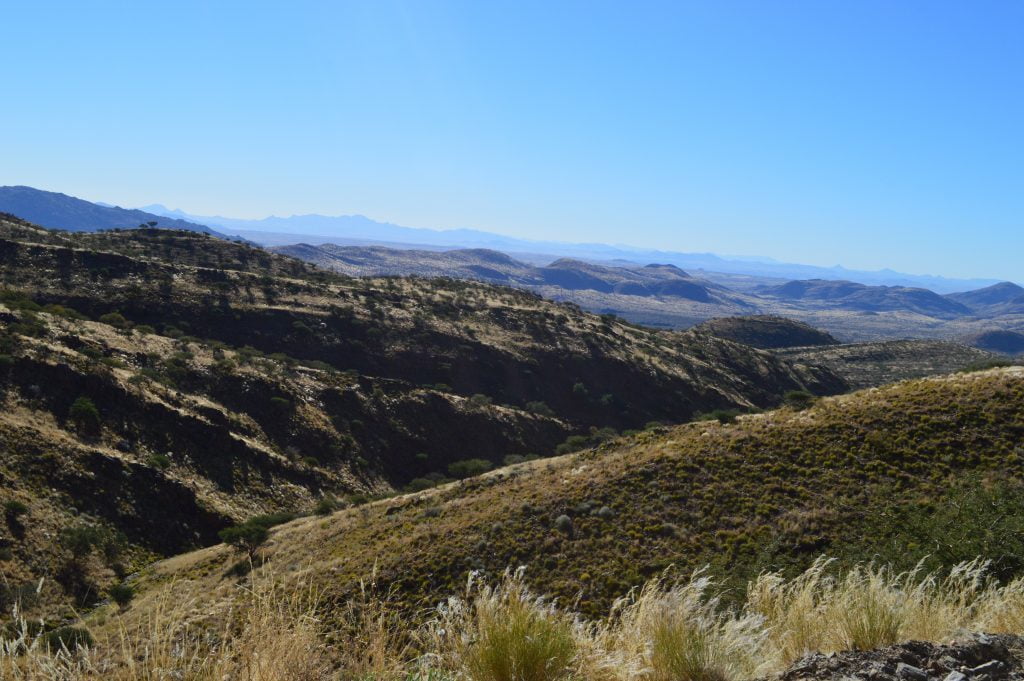The Bosua Pass is one of the “scenic routes” from Swakopmund to Windhoek and it is what makes Namibia an adventure lover’s dream come true. This is because it is filled with scenic viewpoints, landmarks, desert flora and fauna, plus a little bit of danger if you are careless. What more could you ask for?
I had been in Namibia for two weeks staying in Swakopmund, however my friend was coming to join me and I needed to meet her at the airport in Windhoek. Therefore, I elected to drive the Bosua Pass instead of the Gamsberg Pass, which I had taken when I crossed from Windhoek two weeks earlier.
Easy Navigation Over the Bosua pass
In terms of navigation, the Bosua pass is the most simple because you never leave C28. It is just a straight run in either direction. However, as with everywhere I traveled in Namibia, I would not have done it without a sturdy 4×4 and some common sense.
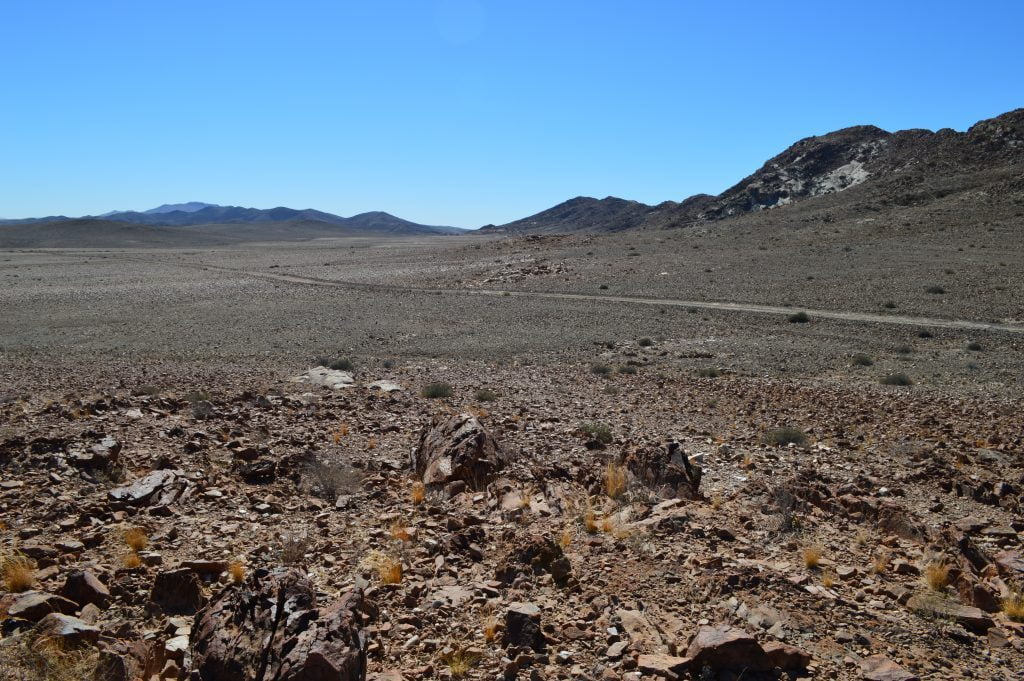
Furthermore, if you stay on C28 for your entire journey, then Namib Naukluft National Park permit is not necessary. However, if you do intend to venture off of C28 you will need a permit from the Ministry of Environment and Tourism Office in Swakopmund. As mentioned before in previous posts, this is easy to acquire.
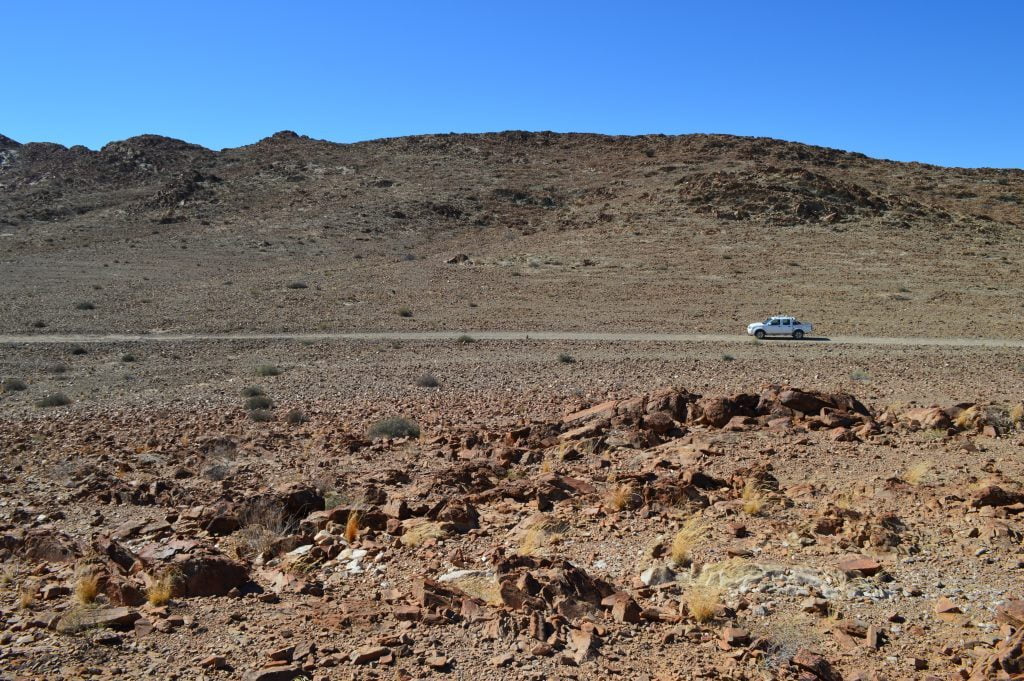
Bosua Pass Crossing Highlights
The drive itself is again visually astounding. Traveling from west to east, you will pass through the Namib Desert, The Great Escarpment and the Khomas Hochland Mountains. After passing through the mountains, C28 takes you straight into Windhoek.
If you are traveling from east to west then everything is reverse and the stages of the journey are similar to when I drove over the Gamsberg Pass.
Traverse the Great Escarpment
The Great Escarpment formed millions of years ago when the South American continent broke away from Africa. As a result, the earth rebounded, creating a downward slope towards the coastline. Therefore, the drive to Windhoek will traverse “The Great Escarpment”.
However, when going over the Bosua Pass, the stage that includes The Great Escarpment is more subdued. This is on account of the less weather resistant composition of the rocks in this area. Therefore, we will be going through what is called “The Escarpment Gap” however, this does not diminish the rewards of the journey.
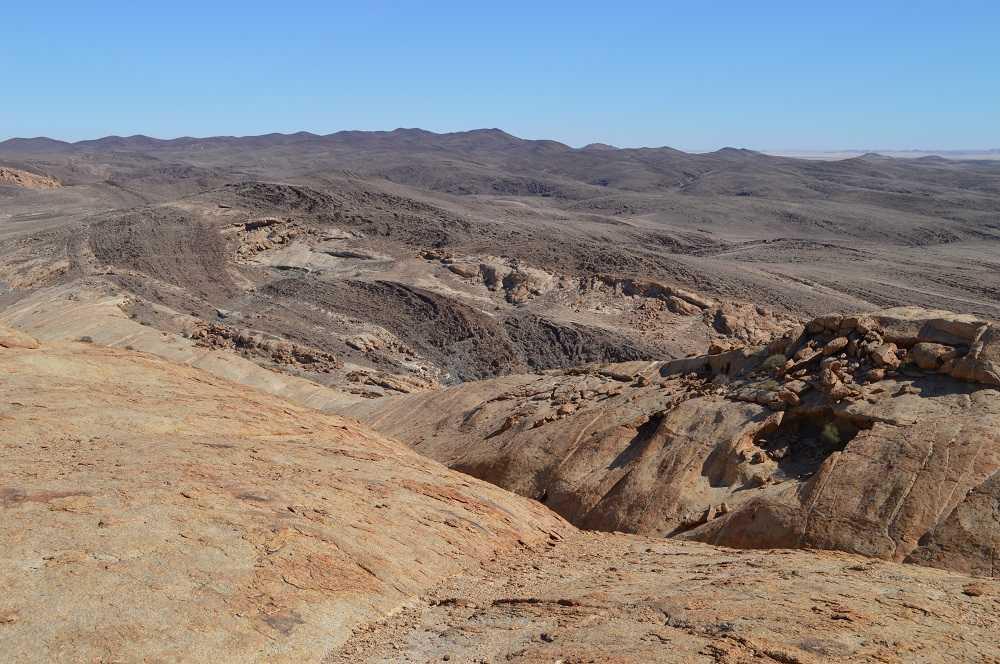
The escarpment gap is at least as thrilling as the Gamsberg Pass and is a bit easier to travel. It is shorter in duration and features the navigational advantage mentioned above. However, when you are entering/exiting the Khomas Hochland Mountains the C28 road gets challenging, you should be prepared for this.
Visit the Blutkuppe on Bosua Pass
There are several stops worth a visit on your way to Windhoek. I chose to stop off at the “Blutkuppe”. The Blutkuppe is a giant “inselberg” that arises out of the level Namib Desert plain.
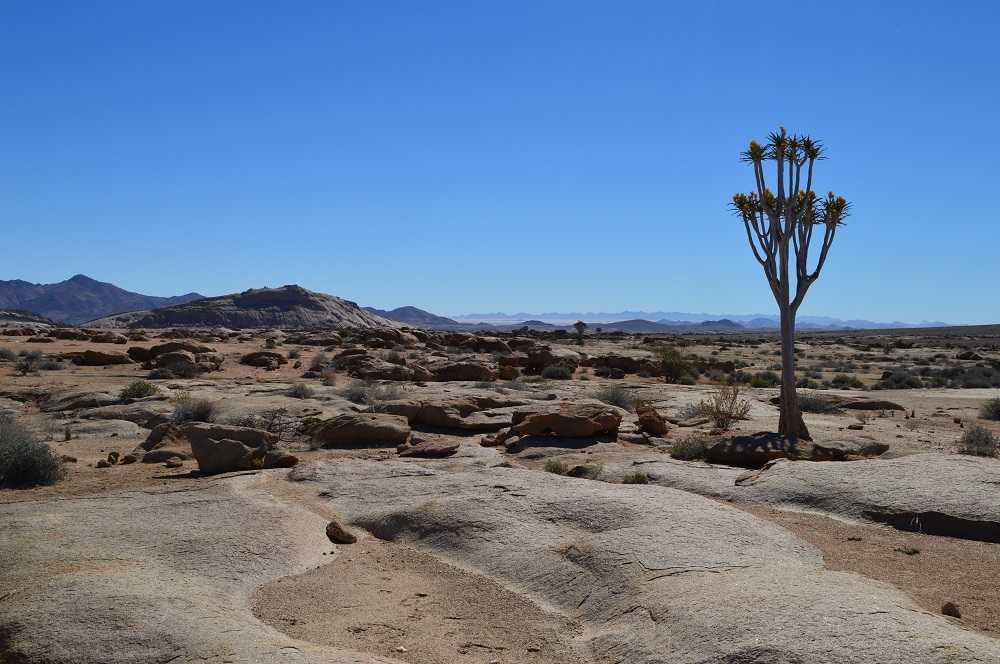
An inselberg is defined as an isolated small mountain, rock, knob or hill that arises out of a flat or gently sloping plain. Additionally, they are typically composed of lava risen from the deeper layers of the earth in earlier periods. The lava solidifies below the surface of the earth and becomes granite. Then softer minerals surrounding the harder granite Blutkuppe are eroded and washed away. As a result, the inselberg becomes prominently exposed.
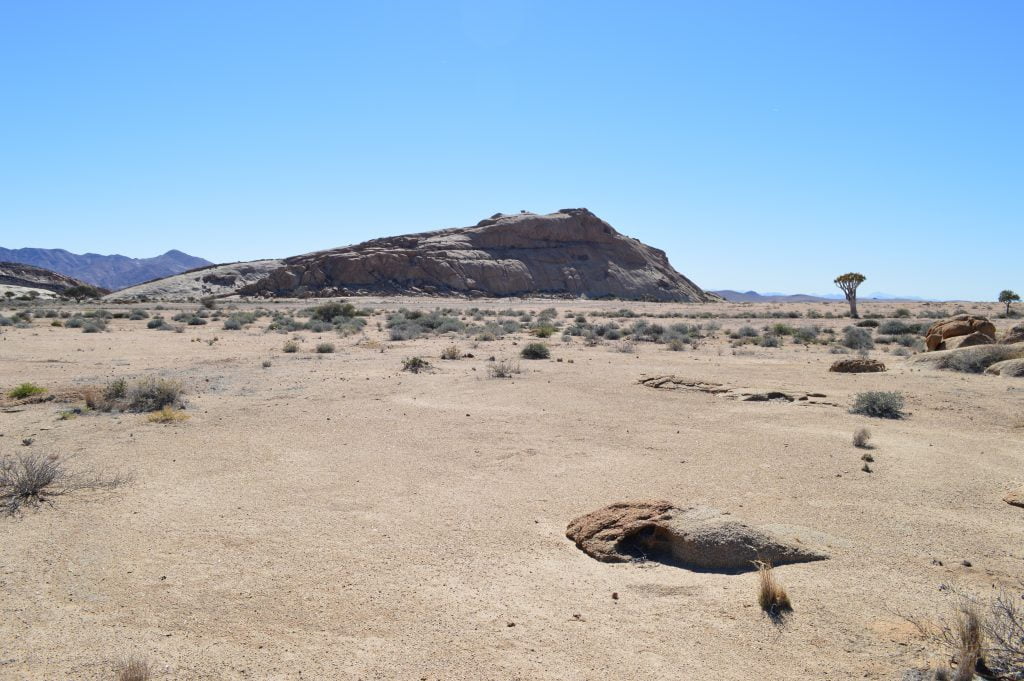
Locating the Blutkuppe on Bosua Pass
The Blutkuppe is easy to find and is about a 1-2 hour drive outside Swakopmund on C28. You need to turn north on an offshoot road off of C28. It is only a few kilometers from there, you will be able to see it well off in the distance before you arrive.
I don’t recall if the offshoot road is marked on C28. They have a very helpful little map that they give you for free at the Tourism office in Swakopmund. You can pick one up when you get your park permit.
Climbing the Blutkuppe
The climb up the Blutkuppe is pretty simple. I approached from the far end and was able to scamper up to the top from there. There is no technical climbing skill required.
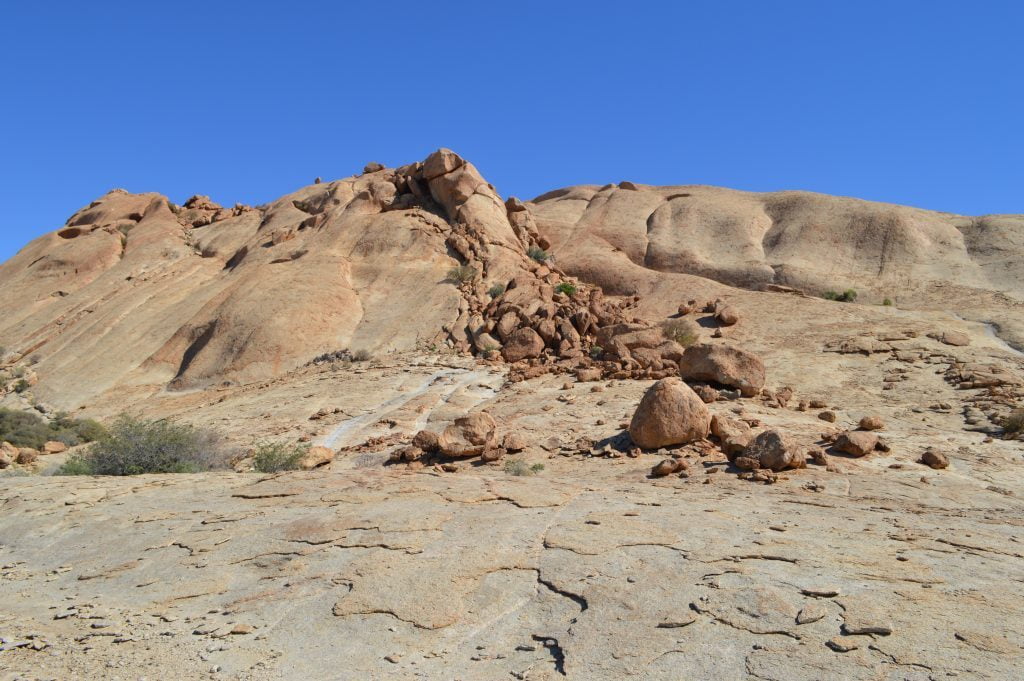
It was a rather simple ascent and I captured the fantastic view from the top on HD video. Notice the flaking granite in the foreground. This is typical of the powerful forces of erosion in the Namib Desert.
The morning fog deposits a layer of moisture, as a result the granite is then blasted by the heat and wind during the day. Additionally, the cold temperatures set in at night. This pattern repeating itself over and over, creates this type of flaking erosion in solid granite.
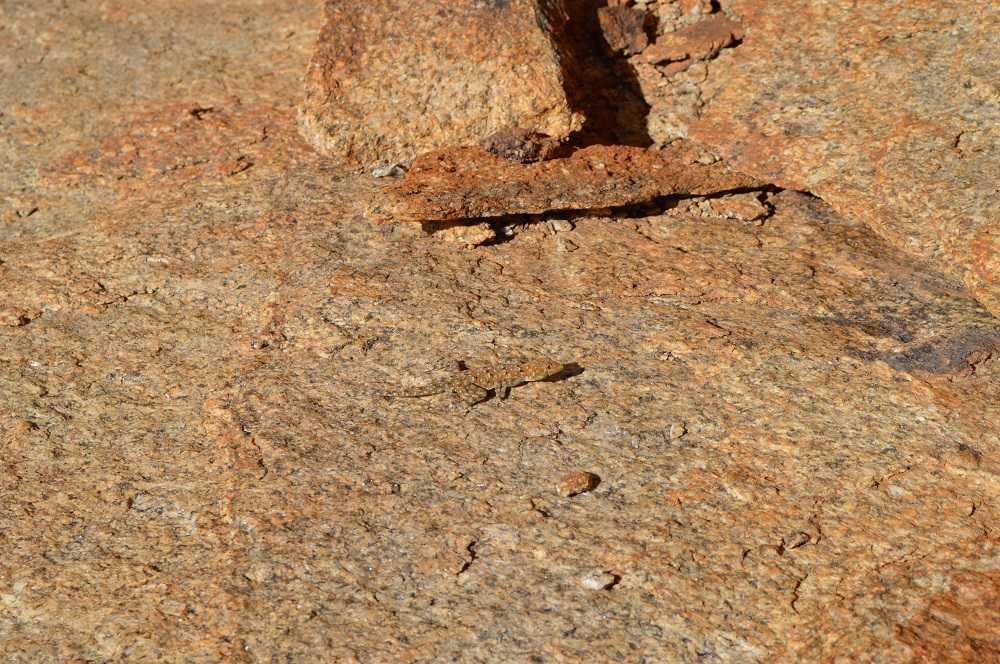
The area surrounding the Blutkuppe is also very fascinating. From the top of the Blutkuppe you get a fantastic view of the Tinkas Plain and also the Moon Landscape in the distance.


The Quiver Trees
The surrounding area is peppered with the famous and very unique looking “quiver tree”, formally known as Aloe Dichotoma. It is a tall branching species of the aloe and it is native to South Africa and Southern Namibia.
It is locally referred to as the quiver tree because the San (Bushman) used its branches to make quivers which are used for holding arrows.
The tallest of the quiver trees are commonly 2-3 centuries old. Although this sounds a bit pretentious compared to the extremely venerable welwitschia.
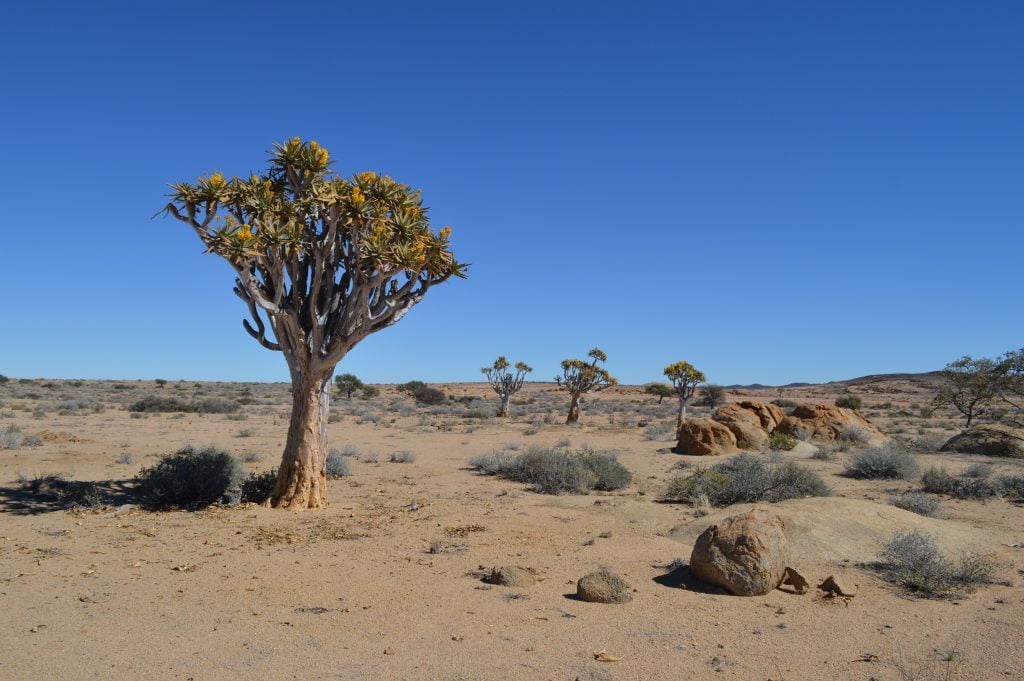
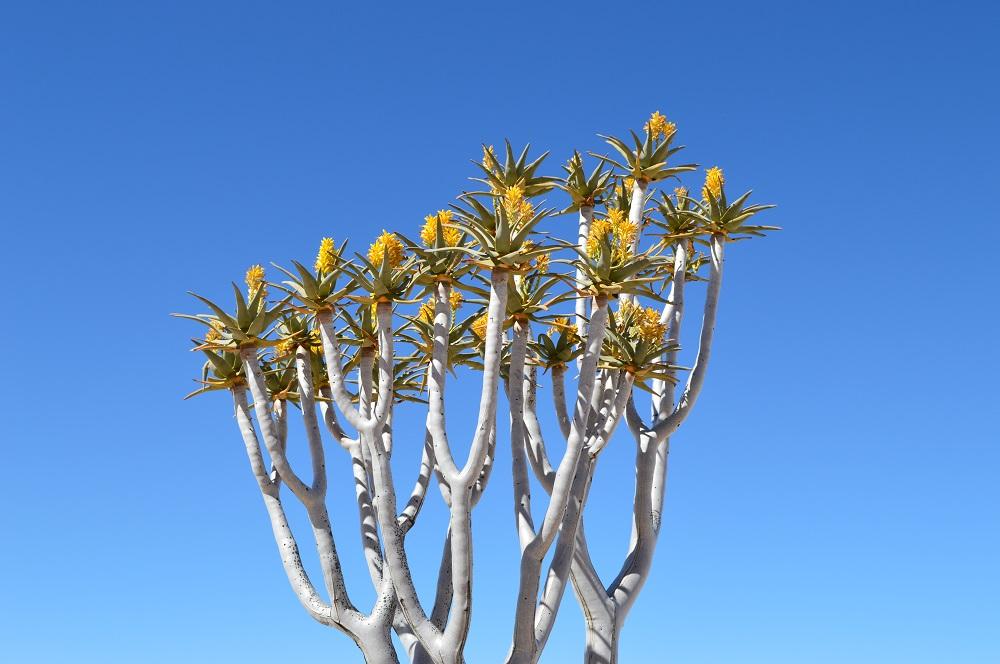

The Khomas Hochland Mountains on Bosua Pass
The Khomas Hockland Mountains extend west of Windhoek as far south as the Gamsberg Mountain and as far north as the Swakop River. Additionally, the mountains are named after the Nama word “Khomas” (for mountain).
Furthermore, the mountain range rises on average about 2000 meters above sea level. and it was formed around 650 million years ago during the Damara Mountain Building. This occurred while the plates composing the Gondwana Continent were still crashing together in massive collisions.
The drive gets steep here on C28 and it is very scenic. I was entering the mountain range in late afternoon. As a result, it was a great time to stop off at some of the view points.
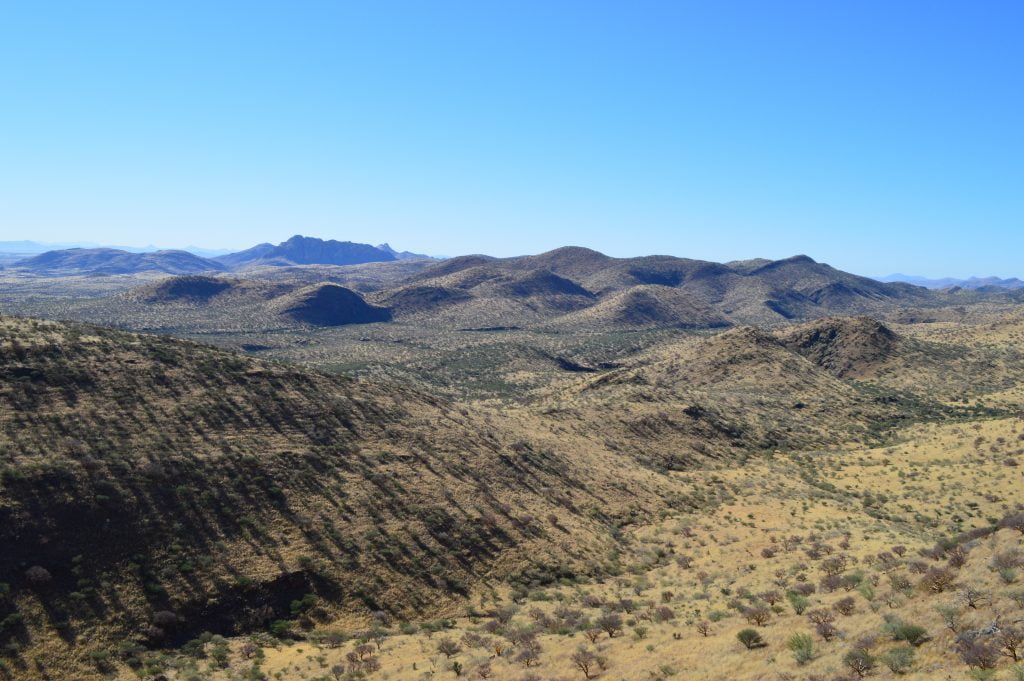
The Petrified Forest on Bosua Pass
Near the view point pictured above I pulled over and did a bit of exploring. I happened to be in an area where the remains of an ancient petrified forest were located. This was rather amazing as it was completely by accident and was not marked or expected, not even by a trail.
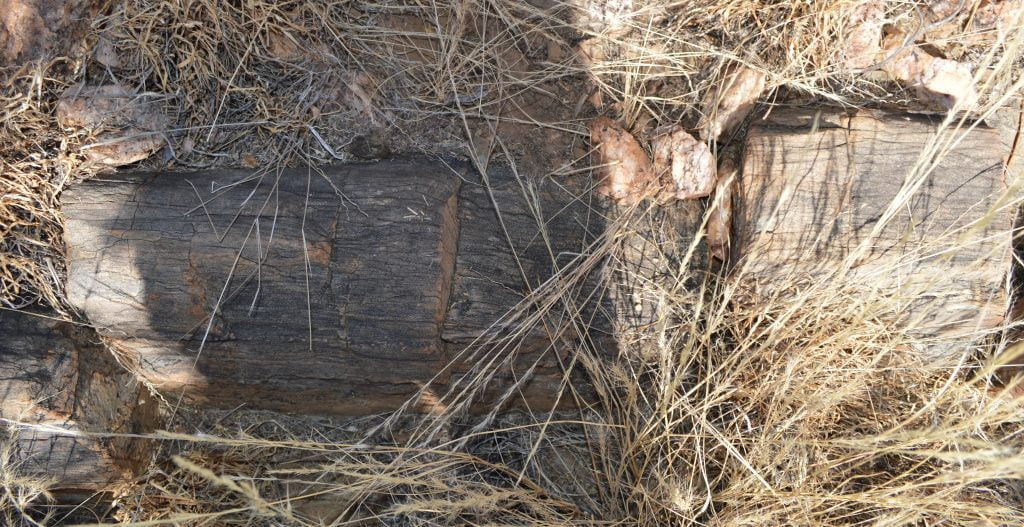


The rest of the drive into Windhoek was uneventful for the most part. Once again as with the Gamsberg Pass adventure, I had timed it perfectly and dusk was setting in as soon as I pulled into my hotel in Windhoek. Now it was time for a cold beverage and await my friend’s arrival at the airport the next morning. A 5AM flight! Ughhh…
